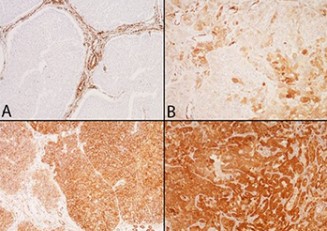The association between NOTCH3 expression and the clinical outcome in the urothelial bladder cancer patients
DOI:
https://doi.org/10.17305/bjbms.2021.6767Keywords:
bladder cancer, clinical outcome, NOTCH pathway, NOTCH3, immunohistochemistryAbstract
Disrupted NOTCH activity is a driving event in urothelial bladder cancer (UBC). After activation by hypoxia, the NOTCH3 receptor participates in tumor cell proliferation, acquisition of the epithelial-mesenchymal transition phenotype, and angiogenesis. The aim was to analyze the association of NOTCH3 expression with histopathological and clinical parameters, and to determine its predictive impact on the clinical outcome in UBC patients. The present research included 614 UBC samples incorporated in paraffin tissue microarrays, evaluated by immunohistochemistry for NOTCH3 expression. The accrual period was four years, while the follow-up period was two years. The membranous expression was semi-quantified (0-3), and the mean degree was 1.81±0.94. Criteria for semi-quantification the NOTCH3 expression were the intensity of the staining and the percentage of positive cells. The samples with negative (0) and weak (1) NOTCH3 immunohistochemical (IHC) score were considered negative, while the samples that showed moderate (2) and strong (3) expression were considered positive. Higher degree of positivity was associated with higher risk of cancer-specific mortality (p<0.001). Independent predictors for cancer-specific mortality were NOTCH3 expression and high stage (p<0.001). NOTCH3 expression was not a statistically significant predictor of recurrence-free survival (p=0.816). This study indicated that NOTCH3 is a predictor of poor outcome, suggesting that the NOTCH3 could be potentially reliable IHC marker for selecting the UBC patients that would require more intensive follow-up, especially if they diagnosed in higher stage, with divergent differentiation in pathological report, and without recurrences which would lead them to more frequent medical assessments.
Citations
Downloads

Downloads
Additional Files
Published
License
Copyright (c) 2022 Ana Ristic Petrovic, Dragana Stokanović, Slavica Stojnev, Milena Potić Floranović, Miljan Krstić, Ivana Djordjević, Aleksandar Skakić, Ljubinka Janković Veličković

This work is licensed under a Creative Commons Attribution 4.0 International License.
How to Cite
Accepted 2022-01-13
Published 2022-07-29









